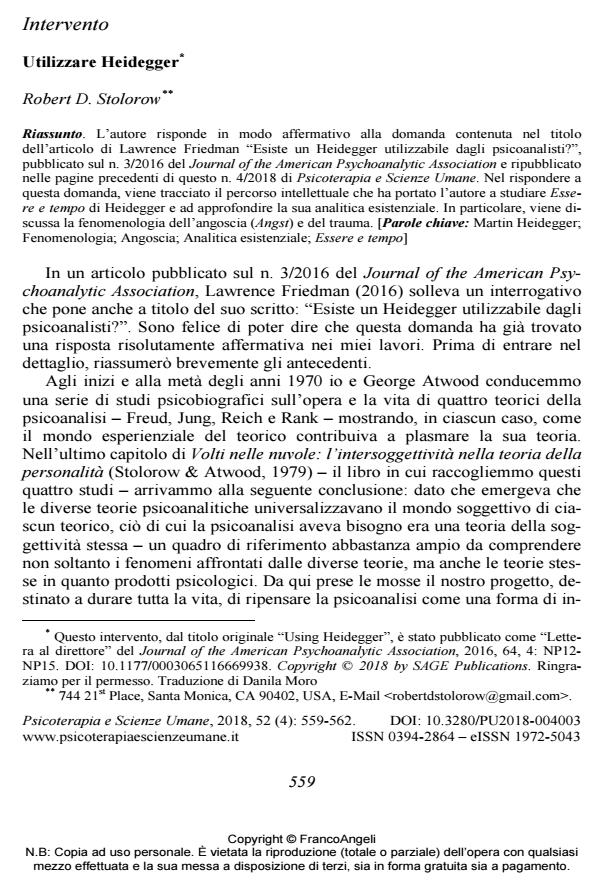Intervento. Utilizzare Heidegger
Journal title PSICOTERAPIA E SCIENZE UMANE
Author/s Robert D. Stolorow
Publishing Year 2018 Issue 2018/4
Language Italian Pages 4 P. 559-562 File size 33 KB
DOI 10.3280/PU2018-004003
DOI is like a bar code for intellectual property: to have more infomation
click here
Below, you can see the article first page
If you want to buy this article in PDF format, you can do it, following the instructions to buy download credits

FrancoAngeli is member of Publishers International Linking Association, Inc (PILA), a not-for-profit association which run the CrossRef service enabling links to and from online scholarly content.
L’autore risponde in modo affermativo alla domanda contenuta nel titolo dell’articolo di Lawrence Friedman "Esiste un Heidegger utilizzabile dagli psicoanalisti?", pubblicato sul n. 3/2016 del Journal of the American Psychoanalytic Association e ripubblicato nelle pagine precedenti di questo n. 4/2018 di Psicoterapia e Scienze Umane. Nel rispondere a questa domanda, viene tracciato il percorso intellettuale che ha portato l’autore a studiare Essere e tempo di Heidegger e ad approfondire la sua analitica esistenziale. In particolare, viene discussa la fenomenologia dell’angoscia (Angst) e del trauma.
Keywords: Martin Heidegger; Fenomenologia; Angoscia; Analitica esistenziale; Essere e tempo
Robert D. Stolorow, Intervento. Utilizzare Heidegger in "PSICOTERAPIA E SCIENZE UMANE" 4/2018, pp 559-562, DOI: 10.3280/PU2018-004003